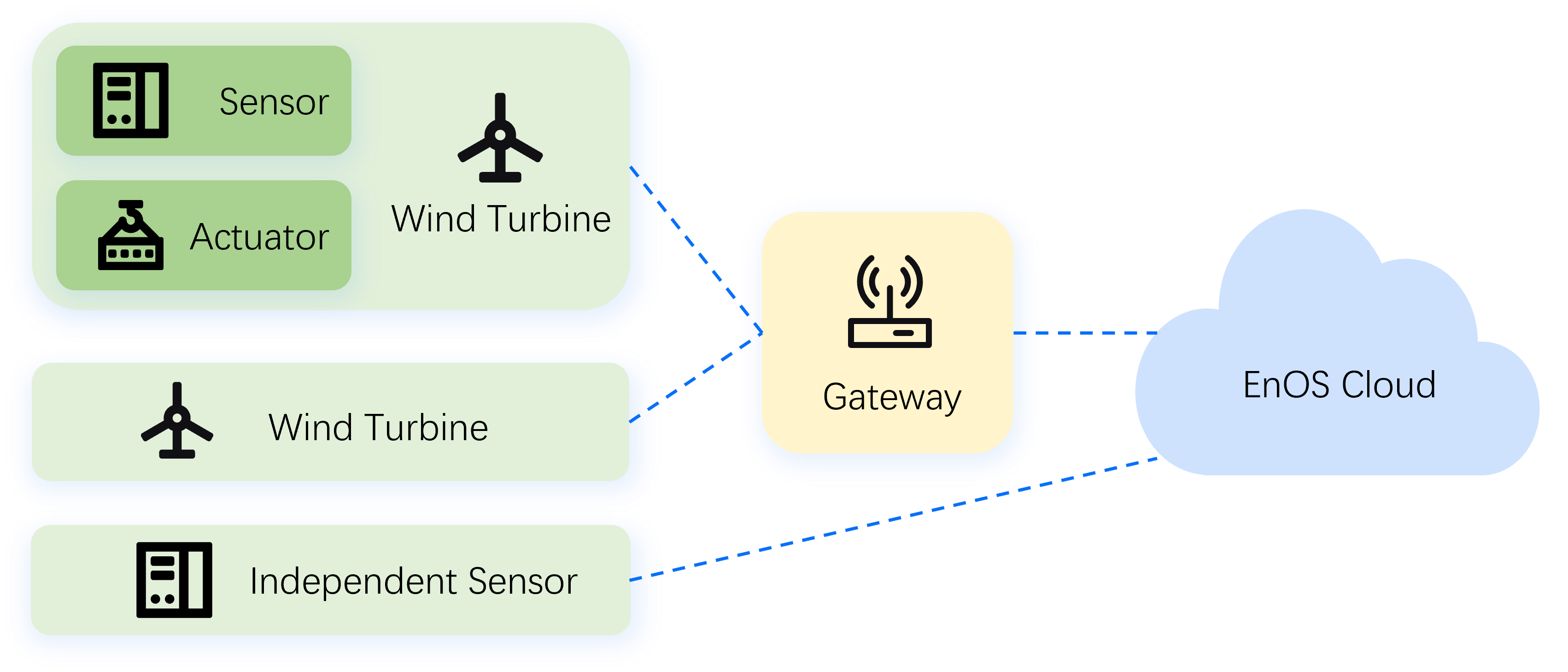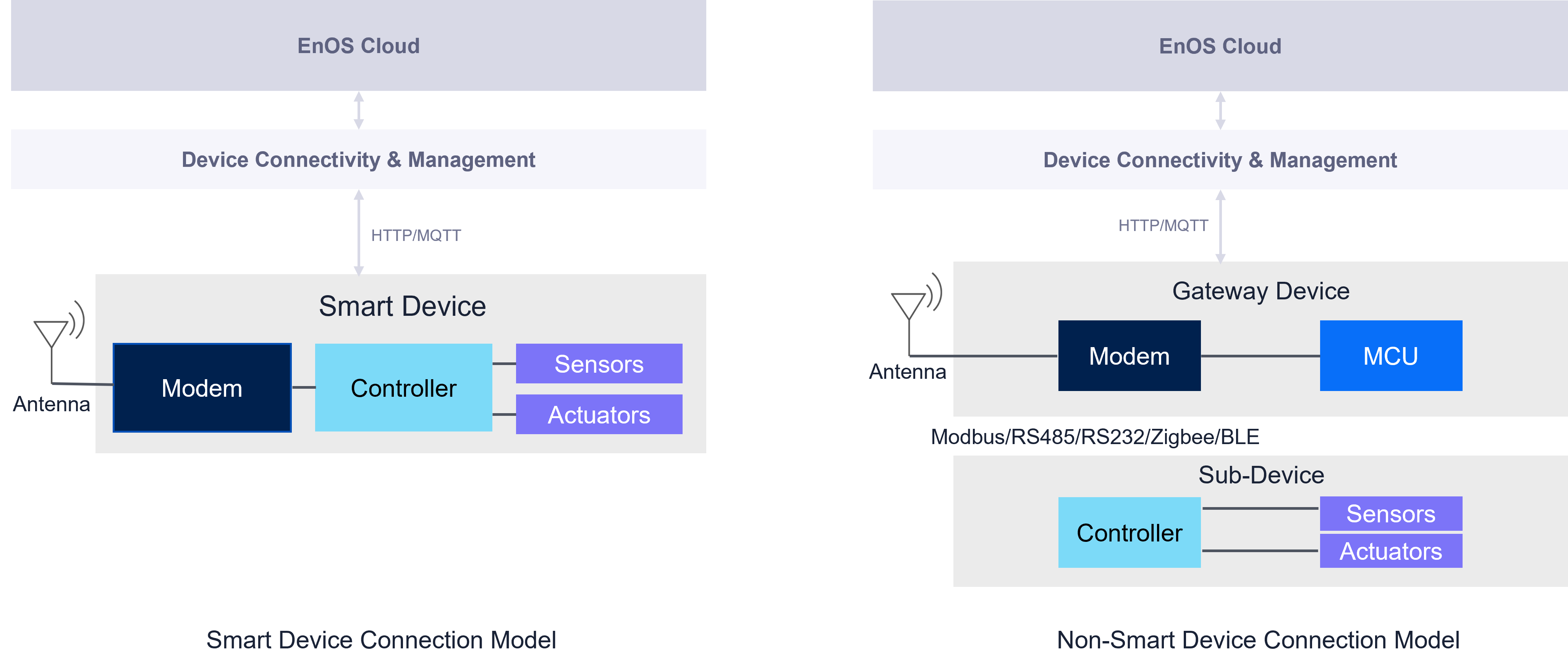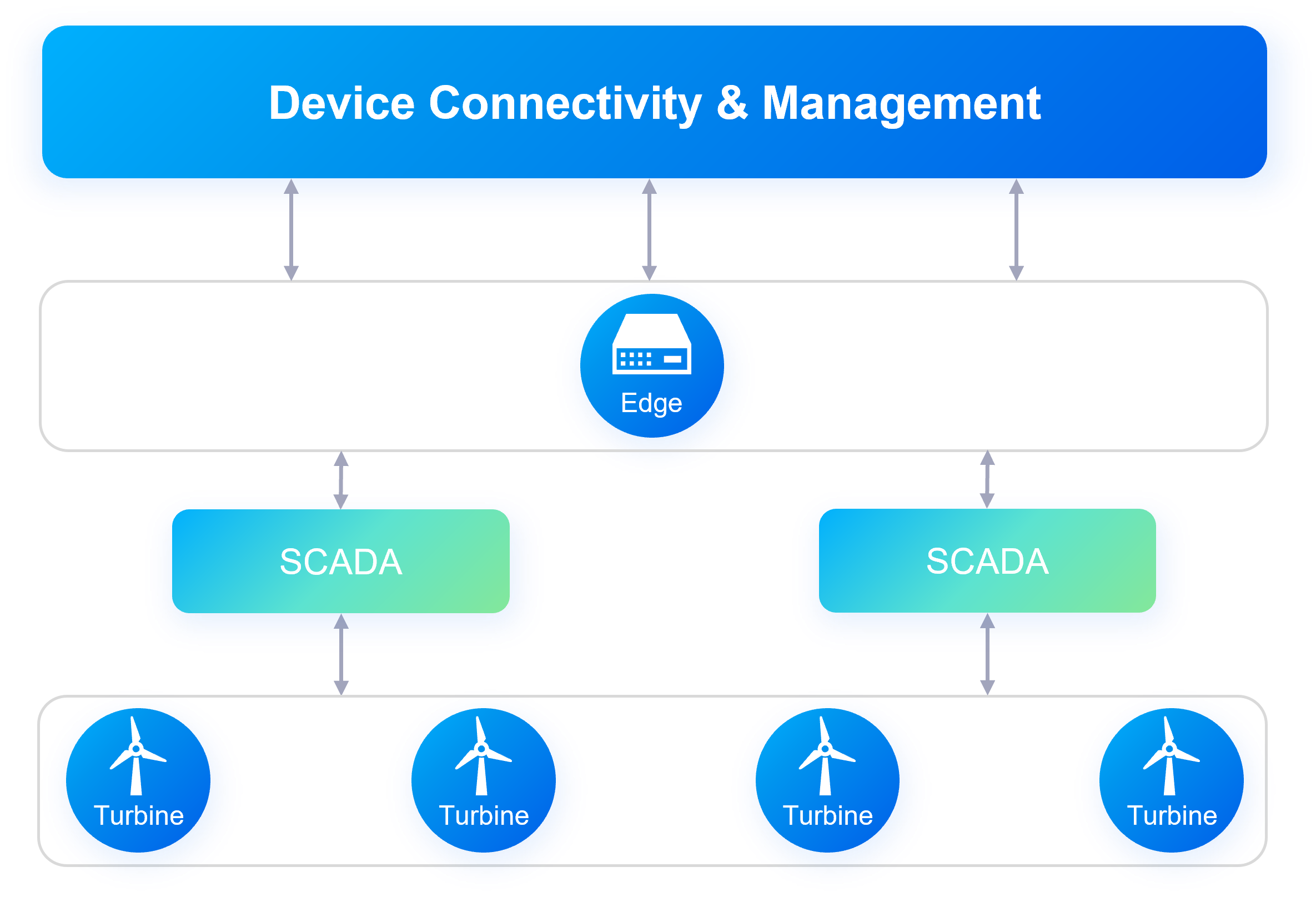Devices in EnOS¶
EnOS manages a vast number and variety of devices, but what exactly is the relationship between devices in EnOS and those in the physical world?
In EnOS, a device refers to an entity capable of transmitting data over a network and interacting with the IoT platform. EnOS abstracts these devices as “device assets” and connects physical devices to the cloud by defining their functional elements (attributes, measurement points, and commands) and communication methods (such as protocols and connection types), enabling data collection, processing, and control.
For example, in an IoT system for a wind farm, EnOS can manage various device assets:
A wind turbine as a complete “device”, containing multiple “sensors” (e.g., an eddy current sensor for wind speed and a displacement sensor for blade position) and “actuators” (e.g., a motor to adjust blade angle).
An “independent sensor,” such as a thermometer mounted on the tower to monitor ambient temperature.
A “gateway,” such as an EnOS Edge device, responsible for collecting sensor data from all turbines and uploading it to the cloud.

In this scenario, whether it’s a wind turbine, an independent sensor, a sensor, an actuator, or a gateway, they are all regarded as “device assets” in EnOS, collaborating to enable monitoring and optimization of wind power generation.
Devices and Gateways¶
EnOS categorizes device assets into two main types, Devices and Gateways:
Devices: Include sensors, independent sensors, actuators, and independent actuators, typically terminals that directly interact with the physical environment.
Gateways: Serve as communication intermediaries, forwarding device data to the cloud or delivering cloud commands to devices.
The following table lists common device asset types, their definitions, and examples to help you understand their functions and application scenarios.
Type |
Description |
Example |
|---|---|---|
Device |
An entity with one or more sensors or actuators, capable of sensing or altering the physical environment. |
Wind turbine |
Sensor |
A component of a device that measures events or properties in the physical environment (e.g., temperature, position) and converts them into data. |
Eddy current sensor, displacement sensor |
Independent Sensor |
A device containing a single sensor, used to measure and convert environmental data. |
Thermometer, accelerometer |
Actuator |
A component of a device that alters the physical environment based on data instructions, such as adjusting temperature. |
Motor, heater |
Independent Actuator |
A device containing a single actuator, performing a single operation based on data. |
Automatic door |
Gateway |
Connects multiple devices or independent sensors/actuators, bridging communication between IoT devices and the cloud. |
EnOS Edge, router |
Smart Devices and Non-Smart Devices¶
Based on whether a device has networking capabilities and the ability to run firmware, EnOS further classifies devices into Smart Devices and Non-Smart Devices. These two types differ significantly in their connection methods and communication mechanisms.

Smart Devices¶
Smart devices support firmware programming and connect directly to EnOS via networks such as Wi-Fi, GPRS, 3G, or 4G. They can independently handle device authentication, data upload, and command reception, communicating directly with the cloud without requiring additional intermediaries.
Smart Device ↔ EnOS Cloud
Some common smart devices include:
Devices with smart collection sticks, such as residential inverters and energy storage batteries.
Smart home devices, such as surveillance cameras and smart temperature-humidity meters.
Non-Smart Devices¶
Non-smart devices do not support firmware programming or independent networking and rely on a gateway to communicate with EnOS. These devices depend on the gateway for device authentication, data forwarding, and command processing, typically connecting to the gateway via wired or short-range wireless protocols (e.g., ZigBee, Modbus).
Non-Smart Device ↔ Gateway ↔ EnOS Cloud
Some common non-smart devices include:

